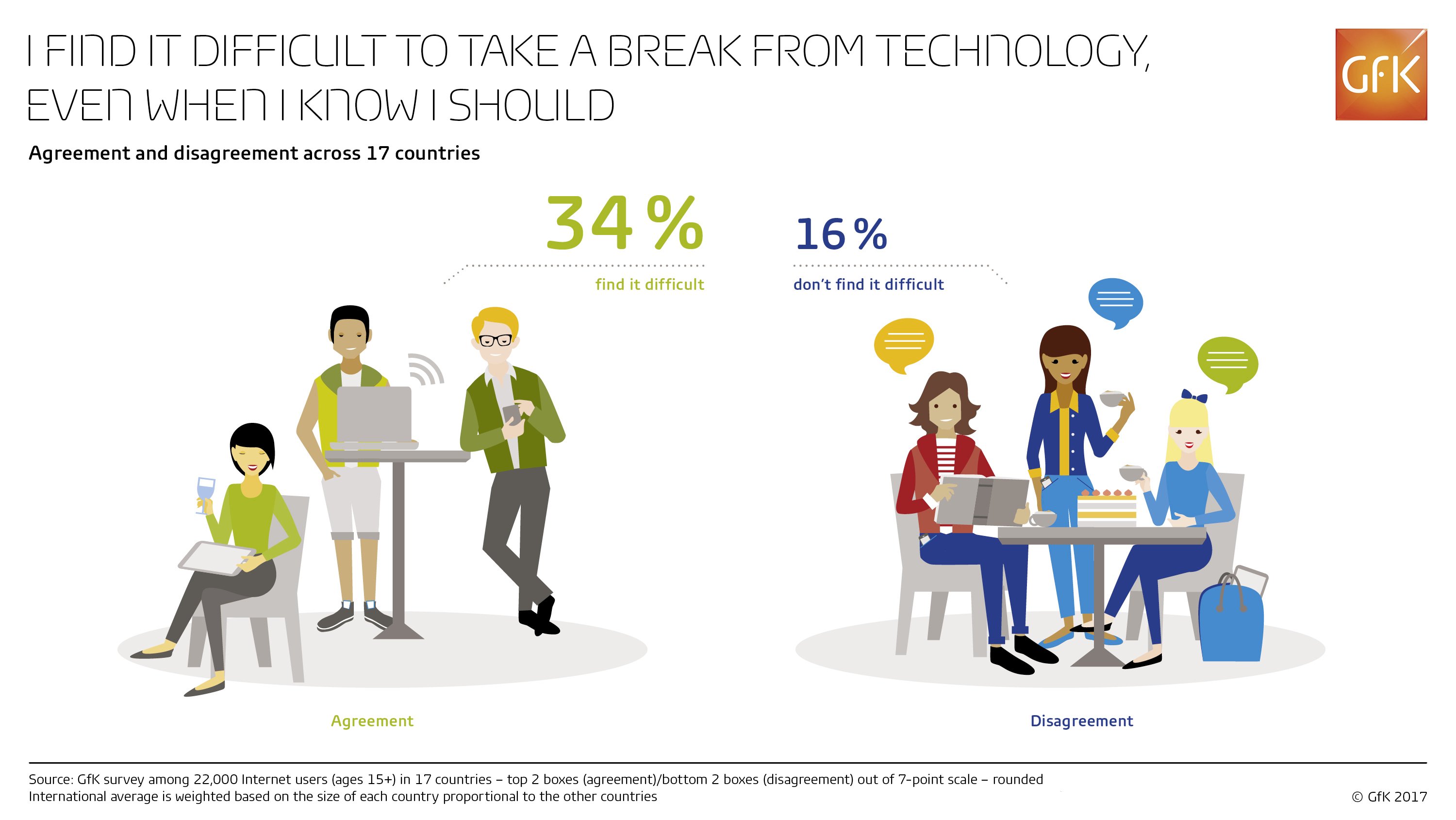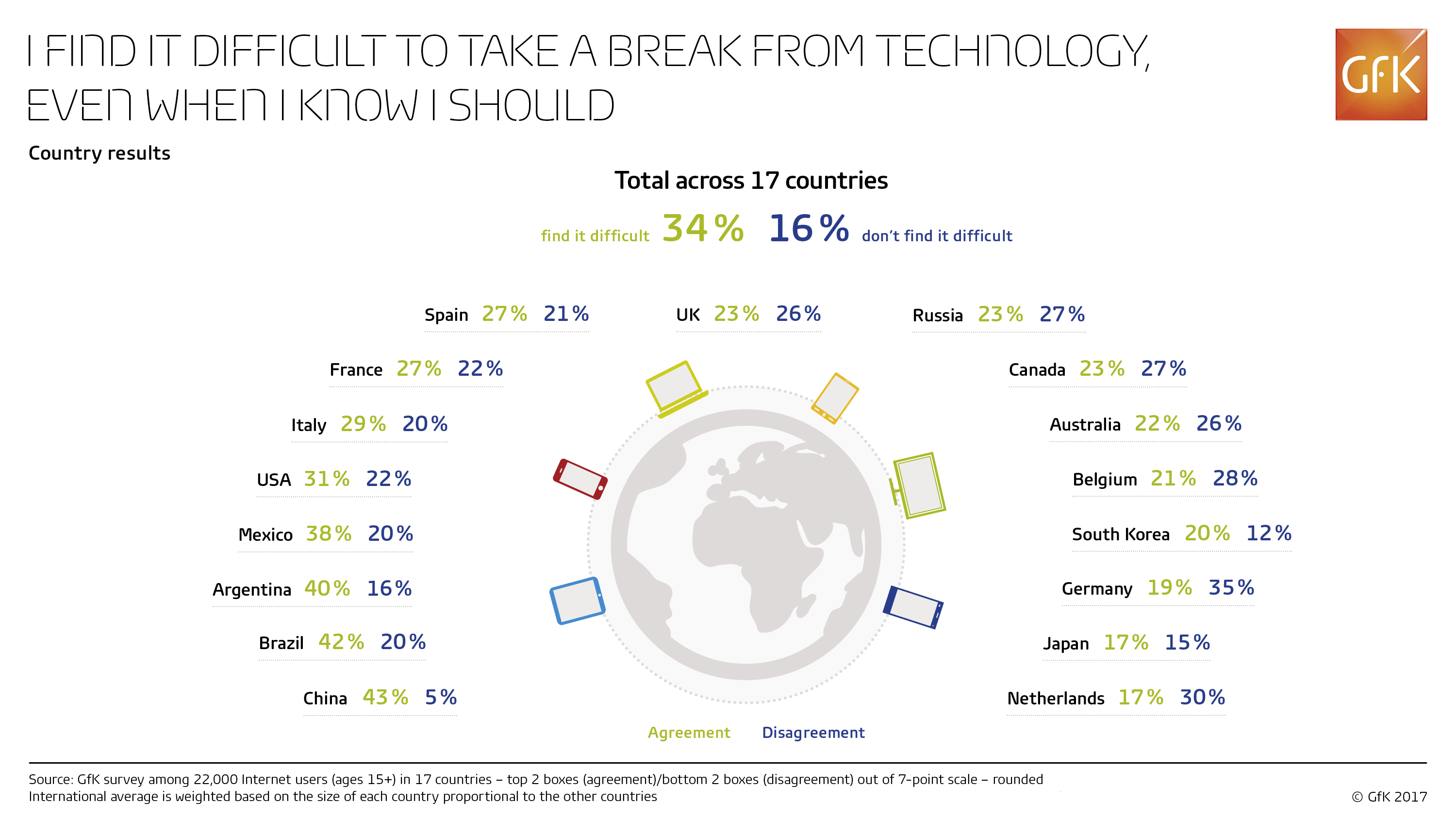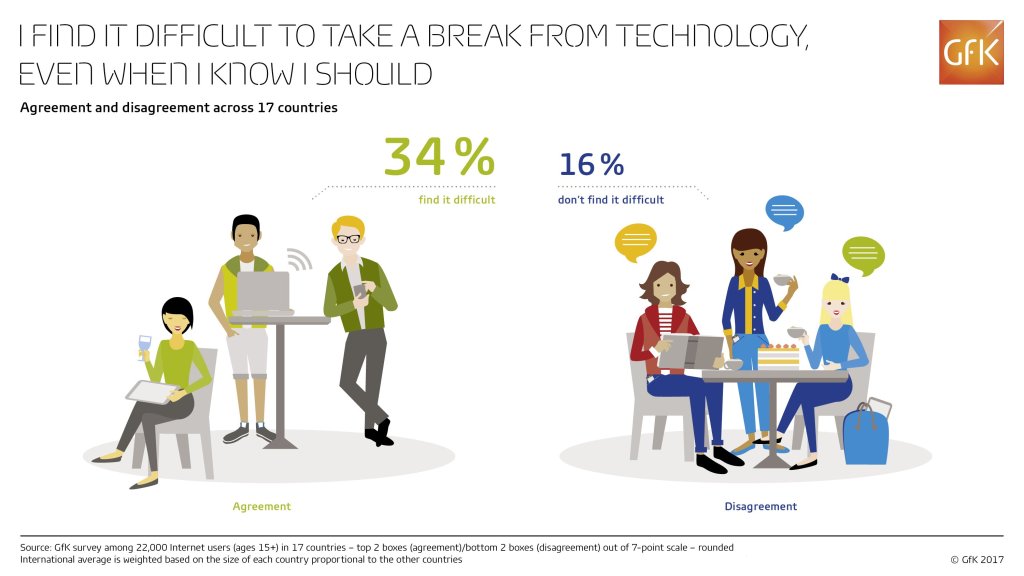Nuremberg, June 29, 2017 – A third of people (34 percent) in an online survey of 17 countries firmly agree1 that they “find it difficult to take a break from technology (my mobile device, computer, TV, etc.), even when I know I should”. This compares to less than half that number (16 percent) who firmly disagree1 that it is difficult to take a break.
The findings from global research experts, GfK, show that, internationally, gender makes next to no difference in people’s struggle to turn off their devices or ‘unplug’ from technology, with nearly equal percentages of both men and women agreeing they find it difficult.
However, the different age groups and income groups show distinct differences in susceptibility to being ‘always on’.
Younger age groups struggle most with technology addiction
Teenagers (15-19 year olds) are the most likely to struggle with technology addiction, with just under half (44 percent) firmly saying they find it difficult to take a tech break, even when they know they should. This dips to 41 percent for those in their twenties and to 38 percent for those in their thirties. It then falls significantly for the older age groups – standing at 29 percent of those in their forties, 23 percent for those in their fifties and 15 percent for those aged 60 and over.
Critically, the 50-59 and 60+ age groups are the tipping point, where there are higher percentages who firmly indicate they have no problem turning off their technology, than percentages saying they struggle to take a break.
High income households show biggest gap between those finding it easy or difficult to take tech breaks.
For people living in high-income households (across all 17 countries), 39 percent find it difficult to take a break from technology, even when they know they should, while 11 percent find it easy – a gap of 28 percentage points. This contrasts to those in low-income households, where 30 percent find it difficult, while 20 percent find it easy – a gap of only 10 percentage points.
China and the Americas have highest percentages who find taking a technology break difficult. Germans lead in finding it easy.
At country level, China (43 percent) has the highest percentage of online population who strongly agree that they find it difficult to break from technology. This is closely followed by the Latin American countries surveyed (Brazil 42 percent, Argentina 40 percent, Mexico 38 percent), with the USA coming fifth (31 percent).
On the other side, Germany has the highest percentage (35 percent) of online population who strongly disagree that taking a break from tech is difficult. This is followed by the Netherlands (30 percent), Belgium (28 percent) and Canada and Russia (both 27 percent).
GfK’s findings clearly show where the key markets lie at a number of levels – from brands offering the latest devices targeting happily ‘always-on’ consumers, to brands offering ‘quality time’ services that resonate with people who like to break from technology.
Download our complimentary “Break from technology” report showing findings by gender, age and income for each of the 17 countries.

Difficulty in taking a break from technology – international overview

Difficulty in taking a break from technology – 17-country comparison
About the study
GfK asked over 22,000 consumers (aged 15 or over) online in 17 countries how strongly they agree or disagree with the statement, “I find it difficult to take a break from technology (my mobile device, computer, the TV, etc.), even when I know I should”
1Data presented in this release represents the bottom 2 boxes (disagreement) and top 2 boxes (agreement) from on a 7-point scale where “1” means “don’t agree at all”, and “7” means “agree completely”.
Fieldwork was completed in summer 2016. Data are weighted to reflect the demographic composition of the online population aged 15+ in each market. The global average given in this release is weighted based on the size of each country proportional to the other countries. Countries covered are Argentina, Australia, Belgium, Brazil, Canada, China, France, Germany, Italy, Japan, Mexico, Netherlands, Russia, South Korea, Spain, UK and USA.




